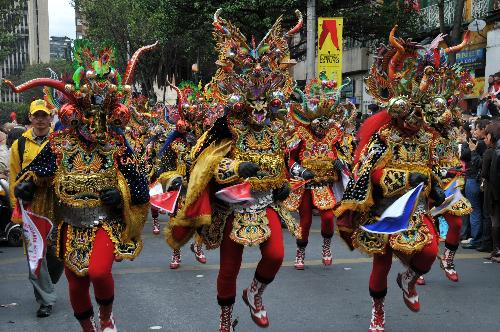Live and travel Colombia through its Melodic heritage
- Metropolitan Traveller

- Jul 16, 2020
- 2 min read
Indigenous, African, and European influences merge to form what we call today Colombia’s culture. A fascinating and refreshingly different culture, yet familiar in many aspects, that will make you fall in love with this vast and enchanting country. Several aspects of today’s culture could be tracked down to the fusion of Spanish culture of the 16th century and our native communities; immigration, carnivals and cultural exchange (students, workers, marriages) with other countries are accountable as well of today’s social behaviors of Colombians. This month we are focusing on music and dance. It's not a lie that Colombia is the land of a thousand rhythms, the beat of the drums runs through the country and different artistic expressions are found at every corner.
Music and Folklore
Colombia is a land of music; its diversity is intimately linked to its many distinct regional differences. Vallenato, a type of Colombian music and dance, originated on the Atlantic coast and is enjoyed throughout the country. Currulao, a type of music from the Pacific coast, uses the sea, rain, and rivers as its central themes and employs mostly ordinary wooden instruments. In the interior of the country, the two traditional types of music played throughout the Andean region are the Bambuco and the Guabina. Both types of music have considerable mestizo influence, often using as their undercurrent themes that emphasize the earth, mountains, and lakes. Joropo is considered to be "fierce" or Plains' music because it is played in the Llanos Orientales, or Eastern Plains, and reflects the cattle ranch workers' arduous way of life. Cumbia music and dance are considered Colombian national treasures whose rhythmic cadence and melodies echo the mulatto and indigenous flavor; it has become the flagship of Colombia's musical genres.
Boasting a wide array of options, you can get a taste of Colombia’s diverse culture by simply listening to all our different categories of music. With different histories, audiences, and instruments to all of them, they all have one thing in common, they sound great and will provide you a new window into appreciating life in Colombia. Some of the most common rhythms are Cumbia, Vallenato, Porro, Carranga, Bambuco, Joropo, Currulao, Champeta, and not ours but certainly a part of our culture: Salsa and Reggaeton.
Carnivals and events
Festivals, carnivals, holiday parties, and celebrations happen all year round in Colombia. The nightlife and local celebrations of the country have no comparison to others and they are an important part of our culture: music and dance are inherent to Colombians. Among the many events celebrated all year round in the country, many of them are number one in the globe such as Feria de Cali in December with the biggest salsa festival; Flower festival in Medellin in August with the largest flower parade in the world. We have the second biggest carnival in the world celebrated in February in Barranquilla; the most important afro-festival in South America, Petronio Alvarez in Cali; and one of the largest festivals in the world, Ibero-American theater festival in Bogotá.
Additionally, we are one of the countries with the largest number of holidays in the world. With 18 free holidays approximately per year due to historic, religious or global celebrations, most of them happen on Mondays which is why we are famous for long weekends.





















Comments